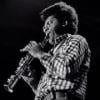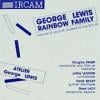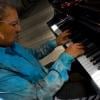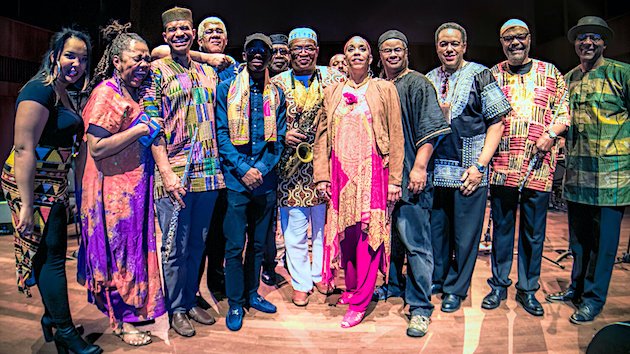
In an interview on KPFA before his Oct. 10, 1971, performance at the Palace of the Legion of Honor, composer and multi-instrumentalist Anthony Braxton made it clear that he refused to be bounded by parochial contentions, topical concerns, or conventional techniques. Asked about his approach to composing and improvising vis-à-vis the jazz tradition, Braxton reframed the conversation in a way that captured the ambitions of many of his Chicago colleagues. “The question is not my relationship to the saxophone,” he parried, “but really what planet is this, anyway?”
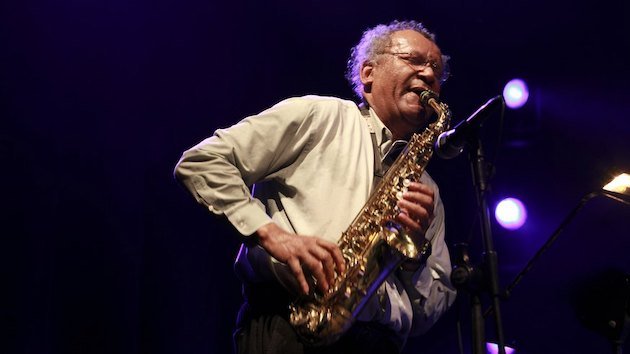
As a native of the Windy City, Braxton came by his cosmic perspective simply by absorbing the unfettered ethos emanating from some of Chicago’s most ambitious and independent-minded African-American artists, a scene defined in the 1950s by bandleader and composer Sun Ra and carried forward by the Association for the Advancement of Creative Musicians (AACM). Launched on the Southside by visionary pianist/composer Muhal Richard Abrams in the spring of 1965, the AACM became a fulcrum and forum for some the era’s most adventurous artists, including Braxton, Henry Threadgill, Wadada Leo Smith, Jack DeJohnette, and the Art Ensemble of Chicago (Lester Bowie, Joseph Jarman, Famoudou Don Moye, Malachi Favors, and Roscoe Mitchell).
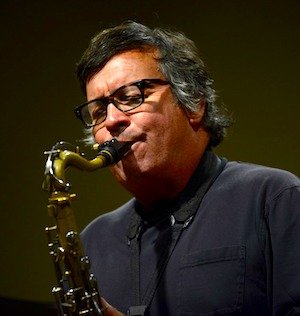
Aesthetically, philosophically, and politically, there are few corners of the contemporary jazz scene untouched by the ideas and practices advanced by the AACM, and you don’t have to look hard to find the organization’s fingerprints in the Bay Area. Braxton, still going strong at 75, has been one of the primary conduits, but several AACM-associated artists have spent significant time teaching and performing in the region, inspiring and influencing many of the Bay Area’s most perspicacious musicians, like Oakland saxophonist Phillip Greenlief.
Over the past three decades, Greenlief has created a vast and varied body of music drawing on overlapping and interrelated jazz and improvised music practices. He’s orbited AACM artists like Braxton, Wadada Leo Smith, and Roscoe Mitchell, drawing inspiration both from their music and idiosyncratic artistic visions. The spirit of independence and insistence on self-definition as artists runs from Sun Ra to Chicago’s contemporary scene, serving as a beacon for jazz and jazz-adjacent artists working outside mainstream institutions. He connects their influence to their roots in Chicago, a cradle of jazz and kindred Black music currents that deeply informed the AACM.
“Those folks were really thinking about sustainability, about reclaiming the importance of composition in the music,” Greenlief said. “They’re all composers, every one of them. Look at how they’ve all come up with their own musical language. That’s the goal, figure out what’s important to you and can you start to map it, and that’s what they did, mapped their musical terrain. When you look at their scores, they’re all really different. That’s what was so important to me, my first big inspiration for where jazz was headed at the moment.”
Part of what makes the AACM’s influence so pervasive is the way the artists have created bases of operation to share their insights. During Braxton’s stint as a professor at Mills College from 1985–1990 he worked closely with ROVA Saxophone Quartet while attracting an impressive cast of graduate students like John Shiurba, Dan Plonsey, Matt Ingalls, Randy McKean, and Gino Robair (performers and composers who went on to reshape the region’s creative music scene). Braxton’s impact expanded exponentially during his long run at Wesleyan University, which led to the creation of the Tricentric Foundation. More than a house for Braxton’s voluminous archives, Tricentric works with musicians to present his music, like a series of concerts in the Bay Area last year marking his 75th birthday.
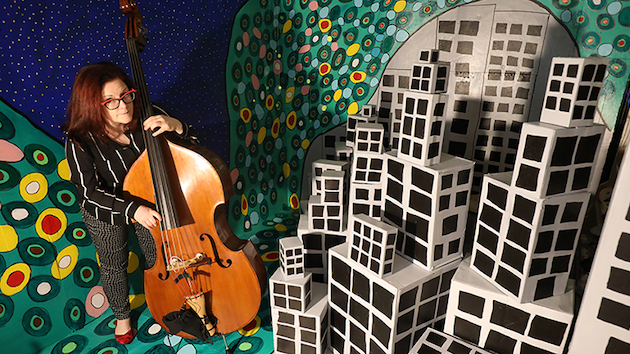
“His music has that feeling of discovery,” said bassist Lisa Mezzacappa, who helped organize the event with New Mexico saxophonist Chris Jonas. “People are still understanding what he’s contributed. For us, he’s not a static force. He’s been in motion this whole time. In figuring out a piece of his, it’s funny and frustrating trying to pin it down. There are 10 live versions, three sets of notation, and someone will tell you one thing, and someone else tells you something else. You have to immerse yourself in all the possibilities.”
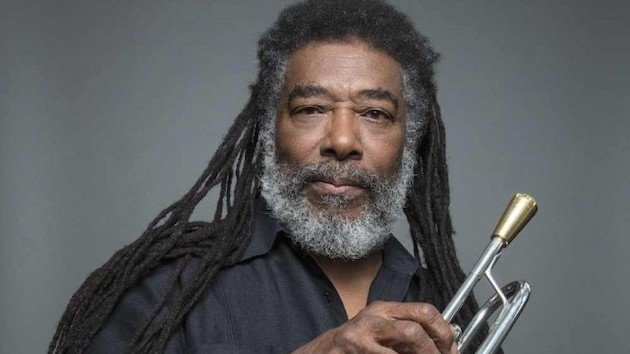
Wadada Leo Smith, who has created a similarly vast and ambitious body of music, found an amenable home at the California Institute for the Arts in Valencia, where he taught for some three decades. But the Bay Area has been particularly fortunate, as the Darius Milhaud Chair in Composition, a Mills position once held by visionaries like Pauline Oliveros and Lou Harrison, has often been home to AACM artists. The longest serving composer was Roscoe Mitchell, who joined the faculty in 2007. A popular and quietly charismatic figure, he instructed more than 100 students in composition, orchestration, and improvisation each year, passing on wisdom he gleaned during his formative years in Chicago.
“What I do with my students, I teach them the way I learned, in real time,” Mitchell told me in a 2019 interview following the announcement he’d been named a National Endowment for the Arts Jazz Master. “Getting people to transcribe some of my improvisations, so they can converse with conductors in real time, those are the kinds of things I think of that are helpful.”
A trademark of the Art Ensemble of Chicago was the use of small instruments, bells, hand percussion, whistles and sundry percussion. Always keen to expand sonic resources, he encouraged his students to expand their instrumental toolkit. “With my orchestration class I tried to cover all the instrument families. Strings one semester, woodwinds, brass, and at the final end I’d elected instruments that students don’t jump on, putting them into situations they need to deal with, like harp and percussion. A lot of students don’t jump into harp and percussion.”
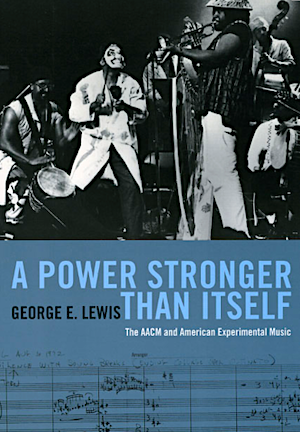 No one has done more to document the AACM’s history, music and methodology than trombonist, composer, installation artist, and electronic music pioneer George Lewis, who’s taught intermittently at Mills over 30 years. He joined the AACM at the age of 19 in 1971, and became the organization’s unofficial historian. Well, unofficial until the publication of his magisterial 2007 book A Power Stronger Than Itself: The AACM and American Experimental Music. With an acute sense of their own significance, the AACM recorded and preserved the minutes of meetings where they hashed out organizational ideas.
No one has done more to document the AACM’s history, music and methodology than trombonist, composer, installation artist, and electronic music pioneer George Lewis, who’s taught intermittently at Mills over 30 years. He joined the AACM at the age of 19 in 1971, and became the organization’s unofficial historian. Well, unofficial until the publication of his magisterial 2007 book A Power Stronger Than Itself: The AACM and American Experimental Music. With an acute sense of their own significance, the AACM recorded and preserved the minutes of meetings where they hashed out organizational ideas.
“A lot of people have the idea that great art comes from heroic individuals sitting in garrets,” said Lewis, the Edwin H. Case Professor of American Music at Columbia University. “I believe it comes from communities of people who come together, particularly suppressed communities that need to come up with creative solutions. You have to find out who the choir is and start preaching to them, work out solutions and start supporting one another.”
The links between Mills and the AACM continue to flourish, even as the Chicago collective has been reinvigorated by new blood. The most acclaimed jazz cellist of her generation, Tomeka Reid, 43, is the latest AACM member to hold the Darius Milhaud Chair in Music Composition. A rising bandleader in her own right, she earned renown in ensembles led by AACM-associated heavyweights such as Roscoe Mitchell, Braxton, and flutist Nicole Mitchell, who ushered her into the organization.
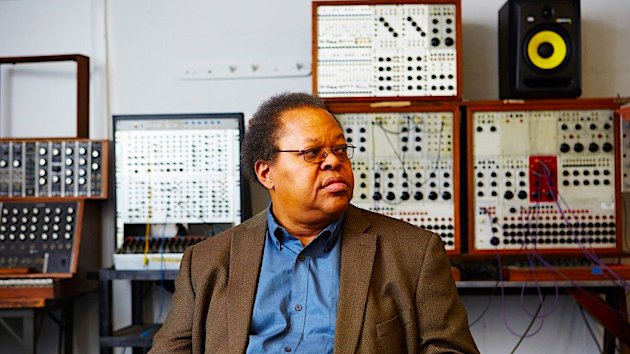
“They all encouraged me to find my own voice,” she said. “I was the only string player, and it could be frustrating because I didn’t know what I was doing, and no one was telling me. In Nicole’s Black Earth ensemble, sometimes I was bass and sometimes lead. I was also doing harmonic stuff even if I was playing melody. I developed a comping style. In Great Black Music, the AACM large ensemble, I had to find my way. They said, you’ll hear it. You’ll figure it out.”
Last month the AACM announced that multi-instrumentalist, writer, actress, doula, and youth advocate Coco Elysses was elected chairperson of the venerable organization, which suggests a new direction for the collective. Following Nicole Mitchell, the first woman to chair the AACM, Elysses is a powerful advocate of gender equity and Black women’s wellbeing. In expanding the organization’s mission, Elysses can tweak the Art Ensemble’s famous motto “Great Black music: ancient to the (healthy) future.”
NB: The original version of this article reported that Roscoe Mitchell was the sole surviving member of the Art Ensemble of Chicago. Don Moye is also alive. We regret the error. Also, Tomeka Reid is 43, not 44.


